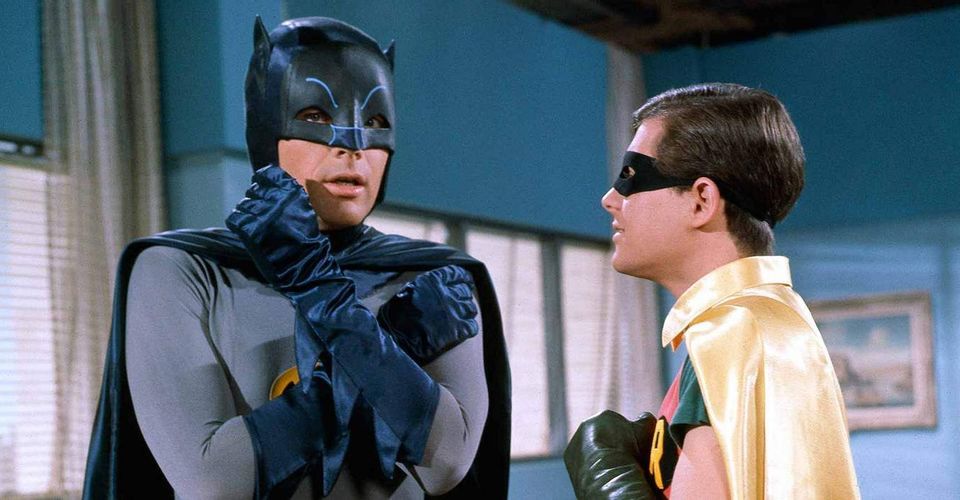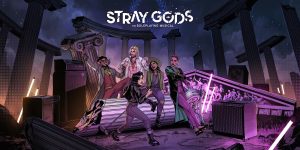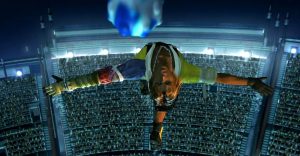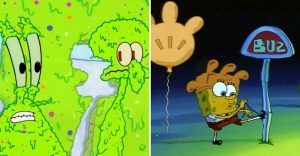Batman: 15 Things You Never Knew About The Adam West TV Show

Last year, the classic 1960s Batman television series celebrated its 50th anniversary, and to mark the special occasion, original cast members Adam West (Batman), Burt Ward (Robin) and Julie Newmar (Catwoman) were featured in Batman: Return of the Caped Crusaders, a hilarious animated film that paid dutiful homage to the iconic show.
The Batman series has polarized comic book fans for decades. Many love the campy take on a normally grim superhero, while others feel the series made comic books look silly and trite, and gave a public perception that the medium wasn’t one to be taken seriously. Some would argue even that this thinking has only recently been rectified by the onslaught of comic book movies in the 21st century.
But no matter your opinion, the Batman television show’s influence on pop-culture can’t be denied, and it remains a groundbreaking and unforgettable series, with West and Ward giving their own inimitable irreverent take on The Dynamic Duo. With that in mind, here are 15 little-known behind-the-scenes Batman facts behind the classic campy show.
15 The Original Pilot Bombed

While Batman became a smash hit, it didn’t start off well out of the gate — in fact, it had the worst score from test audiences in television history. The reason it did so poorly will likely frustrate those fanboys who love their Dark Knight grim and gritty: the show was originally a straight-laced action drama, not a campy counterculture hit. And audiences didn’t care for it.
When network brass got back the dismal test results, they were forced to retool and eventually came up with the camp comedic elements that made the Batman series so famous, and the rest, as they say, is history. Comic book diehards can only fantasize and wonder about what a serious Adam West-led Batman series might have been like. Perhaps in the 1960s, a time caught in turmoil after Vietnam, Civil Rights, and the assassinations of John F. Kennedy, Robert Kennedy, and Martin Luther King, audiences needed some light-hearted escapism, which the Dynamic Duo was able to deliver.
14 Playing it Straight

Batman may have switched gears from drama to comedy in its early stages, but the key to its success was the deadpan, earnest performances from its cast. As Catwoman actress Julie Newmar recalled: “The secret of it was playing it very straight. The comment from the head producer was always, ‘Straight, straight, straight – do not play it for laughs!’ – because the straighter you play it, the more ridiculous it really is.”
The odd side-effect of balancing dry performances in wacky storylines was the fact that young children took the show seriously, as they were too young to process the irony until their teen years, which left many feeling duped. This helped cause the backlash that brought Batman comics back to their dark roots after the series was canceled. It also contributed to the grim and gritty revamping of the Caped Crusader in Frank Miller’s 1985 miniseries The Dark Knight Returns and Tim Burton’s 1989 film Batman, both of which seemed to be a repudiation and course correction of the series’ campy reputation.
13 Adam West, James Bond and Chocolate Soda
So how did Batman producer William Dozier decide on Adam West as the perfect actor to portray the titular hero? Oddly enough, it was a commercial for a children’s favorite dessert drink that sealed the deal.
West was featured in an ad for Nestle’s Kwik, where West played a 007-esque spy. “That commercial,” he said, “was responsible for them asking to see me about Batman. They cast me right away. I read the pilot script, had a conversation, and they just immediately cast me. It was wonderful, after all those rejections. Oh my God!”
Interestingly enough, West would later be offered the part of James Bond in 1969’s On Her Majesty’s Secret Service. In a surprising move, he turned it down, (correctly) saying that Bond should be played by a British actor. Instead, the part eventually went to Aussie actor George Lazenby, who only lasted for one entry in the series. This decision would later haunt West, who suffered a severe career slump and typecasting after Batman was canceled.
12 Burt Ward’s Trial By Fire

Burt Ward was plucked out of obscurity to play trusty ward and sidekick Robin/Dick Grayson, and to say that his naiveté was taken advantage of is a gross understatement. The actor was paid a pittance compared to the rest of the cast in the first season, making just $360 a week.
To add insult to (literal) injury, Ward also wasn’t given the luxury of a stuntman in several instances, and this left him with repeated injuries. He was even sent to the emergency room after an incident in the Batmobile. “It was really dangerous to make the show…I arrived on set, in costume, and got into the Batmobile expecting to see Adam…instead, there was another gentleman dressed as Batman.’ I said, ‘Who are you’…he said, ‘I’m a stuntman – this is a very dangerous stunt and they don’t want Adam to get hurt’.“
According to Ward, his stuntman was off having coffee with West. Holy indignities, Batman!
11 Bruce Lee Makes His Onscreen Debut

The late martial arts legend Bruce Lee is best known for his kung-fu classic, Enter The Dragon, but his onscreen debut was on the small screen in the 1966 Batman episode, “The Spell of Tut”, followed by the 1967 two-part episodes, “A Piece of the Action” and “Batman’s Satisfaction”.
Lee played Kato, the limo driver and sidekick to The Green Hornet (Van Williams), and it was the first time audiences got to see his elegant fighting skills onscreen. At what point in the crossover, Lee squared off with Burt Ward’s Robin, before both sides mended fences to take on the bad guys.
Ward and Lee were actually friends off-camera, and had sparred together before, as Ward would later reveal. “I knew Bruce Lee outside of Batman. He and I lived in the same condominium complex, and he and I used to spar together. Because I was a black belt in karate and he was the ultimate martial artist…it was funny at the time because Bruce Lee was really new. But after his movies like Enter the Dragon, people would go back and watch that first scene of him fighting me, and it was like, ‘Wow, you fought Bruce Lee!”
10 The Secret Behind The Penguin’s Quacks

One of the most memorable villains featured in Batman was The Penguin, played with scenery-chewing glee by veteran actor Burgess Meredith. His performance is most recalled for his “quack, quack, quack” utterances, followed by a puff on his cigarette (placed in his trusty and elegant cigarette holder).
This trademark phrase was improvised by Meredith for a surprising reason: the actor hated cigarette smoke, finding it irritated his throat and made him cough constantly (he had given up the habit 20 years prior for that very reason). Thus his “quacks” were created to soothe his symptoms and to cover up his problematic coughing. Necessity is the mother of invention as they say, and another iconic television moment was born.
It’s also worth noting that Burgess Meredith’s portrayal of The Penguin proved so popular that the writing staff always had scripts on hand for whenever the actor was available. He’s tied with Caesar Romero’s Joker for most villain appearances on the show.
9 The Battle Of The Bulge

The late ’60s were the dawn of the flower power movement, with society’s counter-culture embracing free love and sex, drugs, and rock and roll. But on television, however, networks were pumping out wholesome, family entertainment, and Batman, being such a popular show with children, was no exception.
Given those strict guidelines, network standards, and practices, the National Legion of Decency (yes, that’s a real thing) were anxious to avoid any controversy, and became quite fixated on Batman and Robin’s tights. In an effort to tone down any hint of genitalia, methods were used, including various restraints and layering of tights. The actors were even being prescribed pills designed to reduce…well, you get the picture.
But this bizarre factoid needs to be taken with a grain of salt: the anecdote appeared in Ward’s autobiography Boy Wonder: My Life in Tights, a tome where the actor brags about copious sexual conquests and his endowment — even nicknaming it “the Beast in the Bat-trunks.” TMI, Burt! TMI!
8 It Brought Alfred Back From The Dead

While Batman has had a helicopter parent relationship with Robin over the years in the comics, Bruce Wayne’s other sidekick, his trusted butler Alfred Pennyworth, has remained a constant fixture in the Bat-verse. Or so it seems. Hard as it may be to believe, Alfred was actually killed off in Detective Comics #328 back in 1964. He was brought back in bizarre fashion: as a sort of zombie, with powers of telekinesis, an unearthly appearance, and a desire to attack Batman and Robin. He also gained a new name, The Outsider.
But DC Comics took notice of the character’s newfound popularity thanks to the television show (helped by the droll performance by Alan Napier), and Pennyworth was resurrected in the pages of Detective Comics #356 in 1966, and brought back to the quick-witted and dapper chap that we’ve all come to know and love, all thanks to Napier’s charming and slightly bumbling portrayal.
7 Frank Sinatra Wanted To Play The Joker

Before Jack Nicholson, Mark Hamill, Heath Ledger and Jared Leto, there was Caesar Romero, whose portrayal of The Joker remains an indelible impression for comic book fans of all generations.
Oddly enough, one performer who lobbied for the part of The Clown Prince of Crime was the legendary Frank Sinatra, as Burt Ward discussed with Nerdist: “Everybody was so excited to be on the show. I would talk to the producers and they would tell me they were deluged with requests from every major star. Frank Sinatra wanted to be the Joker. Well, he couldn’t because they’d already cast Cesar Romero… But every major star wanted to be in that show, because their own kids were hammering them. ‘Dad, you gotta get on the show!“
To accommodate these requests, the show developed a running celebrity cameo gimmick, “because there was no way you could have that many villains, they created this walking-up-the-wall [routine]. Where we’re climbing the wall and a window opens and there’s Sammy Davis Jr. There’s Dick Clark. There’s Betty White…Everybody wanted to be a part of something that was so big.”
6 Frank Gorshin’s Emmy-Nominated Role

Another memorable villain from Batman’s rogues gallery was The Riddler, played with devious, eye-twinkling glee by actor Frank Gorshin. Batman was Gorshin’s big break, rescuing the struggling comedian from sparse B-movie parts and nightclub acts.
But his ability to give Edward Nigma just a hint of menace amidst his comical cackling won over audiences, who were charmed by his character’s pathological need to provide Batman with the clues to catch him. This warm reception reverberated throughout Hollywood, and Gorshin was even nominated for an Emmy for his performance.
It’s also worth noting that Gorshin was the very first villain to cross the Dynamic Duo’s path, appearing in the Batman pilot episode, “Hi Diddle Riddle.” And while The Riddler was a constant thorn in the side of the Caped Crusader onscreen, Gorshin and Adam West were fast friends in real life, enjoying each other’s company at dozens of conventions, talk shows, and a dubious variety special before the actor’s passing in 2005.
5 Batgirl’s Rise and Fall

By the third season of Batman, the campy pop-art novelty was wearing off. In an effort to boost flagging ratings, the producers decided to introduce a new hero to the show: Barbara Gordon, aka Batgirl, played by actress Yvonne Craig. Arthur Les Daniels noted in his book Batman: The Complete History that the goal of her introduction was to “attract new audience members, especially idealistic young girls and less high-minded older men.“
Unfortunately, the character didn’t help revive the series, and Batman would be canceled in 1968. Despite this, producer William Dozier had filmed what has been called both a pilot and a “presentation film” (this is still debated) to showcase the appeal of the character, but once Batman was canned, the character was put on ice…with one notable exception: Craig did an in-character PSA advocating for equal pay for women in the early ’70s.
Craig (who passed away in 2015) spoke fondly of her role, saying, “I meet young women who say Batgirl was their role model … They say it’s because it was the first time they ever felt girls could do the same things guys could do, and sometimes better. I think that’s lovely.“
4 The Secret Behind The Batusi

In Batman’s very first episode “Hi Diddle Riddle,” our Caped Crusader hit the dance floor after drinking a spiked drink from the Riddler. Soon, his inhibitions are thrown to the wind as he instigates some groovy dancing — or what has gone on to be named the “Batusi.”
That sequence has become one of the most iconic moments of the series, and West admitted that it was largely improvised in an interview with Nerdist. “I was on the way in to work. I was driving, and I had the script beside me, learning lines. I noticed I had to come up with something quite goofy, because Batman has been slipped a Mickey, a poison drink. I was listening to jazz on the radio, and I switched around, got some different music. I began to move on my car seat, and people looked at me strangely. I was watusing, then batusing while I drove.”
The “Batusi” proved deeply influential to Pulp Fiction director Quentin Tarantino, inspiring the John Travolta/Uma Thurman dance scene in the film.
3 Holy 352 References, Batman!

One of the favorite and most well-known hallmarks of the 1960s Batman television series was Robin’s trusty quips, which always began with “holy” and ended with “Batman!” And the final tally of every time he uttered that comically varied phrase? A whopping 352 instances over 120 episodes, from 1966-1968. Burt Ward’s zingers acted as the punctuation mark to those moments when West’s Batman came to one of his brilliant crime-fighting deductions, and they’ve since gone down in pop-culture reference history.
While these Holy moments were initially novel, the writers of the series become more strained over three seasons to keep up the quips at the same quality. Nonetheless, their batting average (sorry) was pretty good. Some of our favorites: “Holy Steam Valve, Holy Red Snapper, Holy Vertebrae, Holy Homework, Holy Tee Shot, Holy Robert Louis Stevenson, Holy Bikini, Holy Hole in a Donut, Holy Priceless Collection of Etruscan Snoods,” and, the coup de grâce: “Holy Holocaust!” Seriously, he said that.
2 Sherlock Holmes=Batman

If there’s one thing that Adam West’s Batman has done better than any other live-action portrayal of the Dark Knight Detective, it’s illustrating the Caped Crusader’s expert sleuthing skills, a trait that has been largely overlooked in Batman films, and has only been equaled by Bruce Timm’s Batman The Animated Series.
While West’s take on Batman’s detective genius was played for laughs, his passion for solving clues was a huge part of the show’s appeal. West’s inspiration for his character came from another iconic detective: Sherlock Holmes. In particular, West drew upon the performance of Holmes actor Basil Rathbone: “Some of my influences were Sherlock Holmes — Basil Rathbone. People like that who were always musing and deducing and pacing, and suddenly just a thunderbolt of deduction. I used that in a comedic way. You borrow from everything. You do borrow a lot of stuff as an artist or an actor or whatever.“
1 It Saved The Comic Series From Cancellation

Just as it seemed hard to believe that DC Comics would kill off Alfred Pennyworth, it’s equally hard to believe that venerable and ever-popular crimefighting hero almost had his own comic series canceled. But it was a serious concern in the 1960s.
In truth, this was a trend for comics in general at the time. Ever since the comic book boom of the 1940s became hobbled by the backlash caused by Dr. Frederic Wertham’s 1954 book Seduction of the Innocent, the industry’s foothold in popular culture slipped after being forced to adopt so many restrictions to its content.
Both Batman and Detective Comics were limping along until the success of the Batman TV show bolstered both comic series’ popularity, with Batman creator Bob Kane crediting the series with reviving his creative property. And the small screen phenomenon also influenced the content of the books by bringing back Batman’s ‘Rogues Gallery’ and resurrecting (as previously covered) Alfred, while also popularizing Batgirl and establishing the mystique of the Batmobile. So, while many Batman diehards still hold a grudge against the campy Adam West interpretation, it’s time to get over it. It helped enrich the mythology of one of fiction’s greatest creations, even after the comic series would (wisely) return to its darker, noir roots.
—
What other behind-the-scenes trivia would you add to the list? Tell us in the comments!
Batman: Return of the Caped Crusaders is available on Blu-ray, DVD and Amazon Prime. A sequel (featuring William Shatner as Two-Face) will be released later this year.
About The Author

















